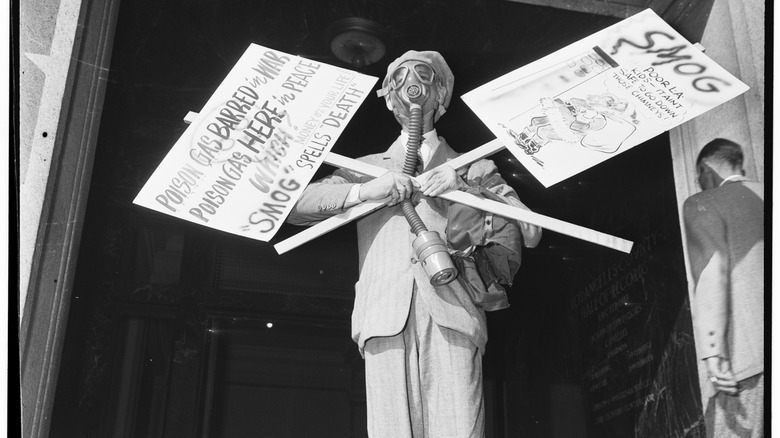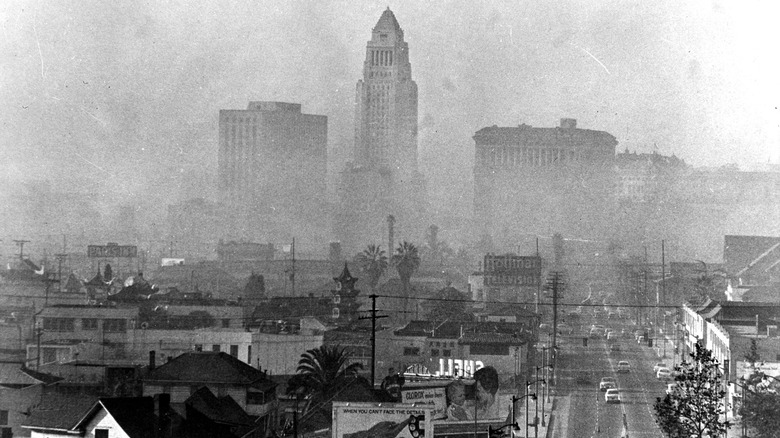Picture it: July 8, 1943, Los Angeles, California. You go outside and are inundated by a mysterious brown haze in the air that smells gaseous. This is unprecedented, and nobody knows what could be causing the dense concentration of eye-watering air — and they wouldn’t for another nine years. That’s when Arie Haagen-Smit, a professor at Caltech conducted tests on the air and found that emissions from the city’s beloved automobiles were to blame, and the nasty pollutants were something called smog.
We are well acquainted with the science of smog now, especially living in LA, and studies show that the city’s air quality is actually better now than it has been in the past. Unfortunately, LA is still a breeding ground for smog thanks to the warm, sunny climate and absurd concentration of commuters in cars, trucks hauling goods, and even boats bringing those goods into and out of the largest port on the continent.
As the city grew exponentially in the mid-20th century and the automobile became the apple of capitalism’s eye over more efficient forms of public transportation, the smog arose and rapidly overtook the beachside paradise. The independent, non-profit news team at The LAist published a brilliant article documenting the first time LA ever faced smog.
Smog used to be so thick that people wore gas masks
In the early days of smog, concentrations were so high that simply being outside made people’s eyes water, and some even wore gas masks to combat breathing the unhealthy air. The Los Angeles Times referred to the phenomenon as the “daylight dim out” because the smog was so dense. LAist said, “Some believed Japan had launched a chemical warfare attack on us. The U.S. was in its second year of heavy fighting against Japan during World War II. Just a few months before smog rolled into the burgeoning L.A. metropolis, Japan had, in fact, bombed Santa Barbara.”
At the time, sulfur was the primary culprit to air pollution in other regions, so a butadiene plant was shut down, but the smog kept getting worse. When Haagen-Smit found that automobile emissions were to blame, he was mocked and vilified before his findings were accepted as true.
Car fans lament emissions regulations, but ultimately they have drastically reduced the number of days that exceed the federal ozone standard in LA, even as more cars are now on the roads. In 1978 LA faced 234 days that the air exceeded the federal ozone standard, and in 2023 that number had dropped by over half, down to 115 days.
We’re doing better, but it’s still an important consideration for the health of the public. LAist did a magnificent job reporting on the history of LA’s smog problem, and included some incredible vintage photographs. Read their article here.




